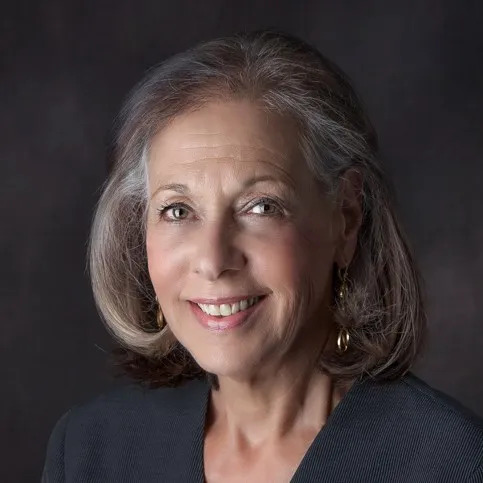Interview with Dr. Alma Merians of Rutgers University

Dr. Alma Merians, PhD, PT received her degree in Physical Therapy from Columbia University and did graduate studies at New York University, receiving a PhD in Pathokinesiology. She is Professor and Chairperson of the Department of Development and Rehabilitative Sciences at Rutgers University. Her areas of teaching include motor control, motor learning and scientific inquiry.
The main focus of her work is to study basic mechanisms underlying neuromuscular control of human movement and sensorimotor learning and to utilize technology-assisted rehabilitation to re-train people with neurological diseases like stroke or cerebral palsy. Her group was one of the pioneering groups to use interactive, adaptive robotics and virtual reality simulations for hand training in people with hemiplegia post-stroke. She has been integral to the development of this system. Her teaching expertise as a Professor in the Department of Rehabilitation and Movement Sciences is in Motor Learning and Control and Neurorehabilitation. As a Physical Therapist, She has extensive clinical expertise in the rehabilitation of adults and children with neurological disorders. She has brought this important combination of skills to the development and testing of this innovative system. Her knowledge regarding motor control and motor learning informs the customizable adaptations that automatically modify the level and challenge of the task and the visual, auditory, and haptic feedback presented to the subjects. Her early work examined the behavioral concomitants of traumatic brain injury and the nature of movement deficits found in patients with brain damage from either a left sided or right-sided cerebral vascular accident. Uncovering some of the precise movement deficits in patients with cortical brain lesions led her to think about innovative methods to facilitate the reacquisition of these functional movements. Traditional physical therapy treatment methods have provided tangible but limited improvements in regaining precise control of upper extremity function after a stroke. She has published numerous manuscripts and received grant funding for this ongoing research program.
Note: You should consult with your doctor or physical therapist for recommendations on treatment. The views and opinions expressed in this article are those of Dr. Merians and do not necessarily reflect the official policy or position of OnlinePhysicalTherapyPrograms.com
How did you become interested in researching stroke patient rehabilitation?
My interest developed as a result of my clinical physical therapy practice with pediatric and adult clients with neurological deficits. Traditional physical therapy treatment methods have provided tangible but limited improvements in regaining precise control of upper extremity function after a stroke. Working in movement analysis laboratories, uncovering some of the precise movement deficits in patients with cortical brain lesions led me to thinking about innovative methods to facilitate the reacquisition of these functional movements. The main focus of my work is to study basic mechanisms underlying neuromuscular control of human movement and sensorimotor learning, and to utilize technology-assisted rehabilitation to retrain people with neurological diseases like stroke or cerebral palsy. We were one of the pioneering groups to use interactive, adaptive robotics and virtual reality simulations for hand training in people with hemiplegia post-stroke.
What are some of the most important things we have learned about stroke rehabilitation in recent years?
Stroke is a complex and heterogeneous disorder, making clinical trials difficult. Despite more than a decade of investigation of innovative upper limb motor therapies, 60% of patients with severe arm impairment one-week post-stroke do not recover function at 6-months. Recovery of hand function is especially recalcitrant to intervention in part due to the complexity of motor control needed to manage the multiple degrees of freedom required for normal function. There is a vital need to develop effective upper extremity interventions with a focus on hand rehabilitation.
A lot of your recent research looks at using virtual reality (VR) and simulations to help stroke patients in their recovery – can you tell us more about what that looks like and what you have learned about virtual reality’s effectiveness as a recovery tool?
In our initial experiments we found that this high dosage practice improved patient’s hand and arm function even if they had the stroke several years prior. We are currently testing the value of intensive, high dosage training as well as the optimal timing for this therapy. We are investigating the effects of intensive task and impairment-based training of the hemiparetic hand using haptic robots integrated with complex gaming and virtual reality (VR) simulations in the first two months after stroke. Current service delivery models in the United States limit treatment time and length of hospital stay during this period. In order to facilitate timely discharge from the acute care hospital or the acute rehabilitation setting, the initial priority for rehabilitation is independence in transfers and ambulation. This has negatively impacted the provision of intensive hand and upper extremity therapy during this period of heightened neuroplasticity.
Can VR simulations be used at home outside of therapy sessions to continue recovery?
Yes. We also have a home-based model that we are using with patients in their homes.
What are some of the challenges to getting stroke victims the best care and outcomes possible?
Probably funding and quality of the rehabilitation.
How do you choose new research projects?
We keep trying to improve our system and the interventions.
What advice do you have for those interested in a career in physical therapy?
It is a wonderful career. You can engage in various aspects of the profession, clinical care (adults or pediatrics), education and research.

